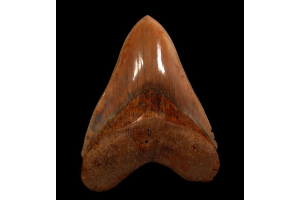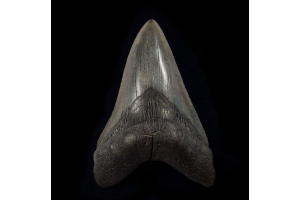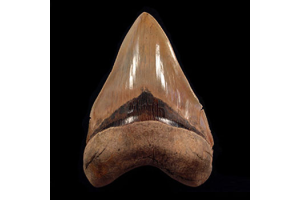Page 5 - Home Page Latest Post
- - December 04, 2025
Collectors and fossil buyers do not look for decorations. They search for authenticity. A real Megalodon tooth stands apart because it holds the raw signature of time. You can feel it in the weight, see it in the enamel, and trace its story through natural wear that no copy can fake. No mold, no paint, and no machine can imitate millions of years beneath the Earth. That is why buying without proof opens the door to disappointment. When you explore genuine megalodon teeth for sale, always focus on proof of origin and condition before you buy. The rise of replicas makes knowledge your best tool. If you want truth in your hands, you must shop with that mindset.
Replicas Hurt More Than Just Value
The problem is not just aesthetics. It is trust. Many sellers post bold claims with no factual background. They offer low-priced fossils that look right in photos but arrive as resin casts. These imitations mislead first-time buyers and frustrate serious collectors. If you invest in fossils without
- - December 04, 2025
Megalodon teeth have captured the imagination of fossil collectors, educators, and marine life enthusiasts for generations. At Buried Treasure Fossils, we are proud to offer a premier collection of authentic Megalodon teeth for sale, including rare specimens that exceed six inches in length. These remarkable fossils offer a direct connection to one of the most formidable predators in Earth’s history — the Megalodon shark. From the distinct heart-shaped structure to the razor-sharp serrated edges, Megalodon teeth offer an awe-inspiring glimpse into prehistoric marine life.
Let’s explore what makes these fossilized teeth so special, where they come from, and why they remain among the most sought-after treasures for fossil enthusiasts across the globe.
Here are a few aspects to consider about Megalodon shark’s jaw:
A Glimpse into Prehistoric Majesty: The Megalodon Shark
The Megalodon shark is considered the largest and most formidable shark to have ever existed. Growing up to an estimated
- - December 04, 2025
Buying a megalodon tooth is more than just acquiring a fossil; it’s an investment in deep time. We know that collectors, enthusiasts, and even first-time buyers often seek assurance that their purchase is the real deal. With many replicas and restored specimens in circulation, learning how to identify a genuine fossil becomes essential. Whether you’re browsing a gallery or hunting for an authentic megalodon tooth in Richmond, TX, knowing how to verify authenticity can protect you from costly mistakes.
Below is a clear guide to help you examine a tooth’s features, avoid common fakes, and buy with confidence.
Why Tooth Authenticity Really Matters
A genuine megalodon tooth holds scientific, historical, and collectible value. Authentic specimens can range from small, well-preserved fragments to massive 6-inch giants, each telling a story of a predator that once ruled prehistoric oceans.
Authenticity impacts more than just appearance. It influences value, resale potential, and your ability
- - December 04, 2025
A photo of a massive fossil tooth has made waves across the fossil-hunting and collecting world. Claimed to be the largest megalodon tooth ever found, this specimen has stirred debate, curiosity, and even some skepticism. Is this tooth a groundbreaking discovery, or just another fossil hoax? We decided to take a closer look at the details, claims, and scientific plausibility behind it. As fossil enthusiasts, we understand the thrill of chasing the extraordinary. At the same time, it’s just as important to verify what’s real.
What’s Being Claimed?
The controversial tooth in question is said to measure over 7.5 inches, well above the often-quoted 7-inch threshold that defines the rarest category of megalodon teeth. That size places it into the spotlight immediately, as only a handful of such large specimens have ever surfaced. The photo shows the tooth alongside a ruler and coin for scale, helping fuel the belief that this may indeed be the largest megalodon tooth ever found.
Naturally,
- - December 04, 2025
Long before humans explored the deep blue sea, there lived a shark so gigantic that its bite could crush a whale in half. Its legend still roars through the oceans of imagination today. Kids can’t get enough of stories about this ancient predator—and the mystery that lies inside a big megalodon tooth! These colossal fossils spark wonder, adventure, and curiosity, reminding young explorers that even the ocean once had a king like no other.
The Ocean’s Biggest Predator: Meet the Megalodon
Picture a shark longer than a school bus—nearly 60 feet of pure power gliding through prehistoric seas. The Megalodon wasn’t just any shark; it was the ultimate ocean giant, ruling the waters from around 20 million to 3 million years ago. Its name, Carcharocles megalodon, literally means “big tooth,” and for good reason. Its teeth could reach over seven inches long—about the size of an adult’s hand!
Scientists believe the Megalodon hunted huge marine animals such as whales, dolphins, and giant sea turtles.
- - December 04, 2025
When we think about prehistoric predators, few are as jaw-dropping as the megalodon. Known as the largest shark to have ever lived, this ancient creature left behind fossils that continue to spark awe and fascination, most notably its teeth. These teeth are more than relics; they’re windows into a time when the oceans were ruled by true giants. If you're here because you're curious about how big a megalodon tooth can get, you're not alone. Many collectors, fossil enthusiasts, and educators find themselves drawn to the sheer size and striking appearance of meg teeth, which have become prized pieces in fossil collections across the world.
Understanding the Size Range of Megalodon Teeth
Megalodon teeth vary significantly in size, but they are generally large by any standard. While smaller specimens may measure around 3 inches, many reach over 5 inches in length. Teeth exceeding 6 inches are rare and highly sought after. The largest authenticated megalodon tooth ever discovered measures about
- - December 04, 2025
If you’re asking how much is a megalodon tooth, the short answer is: it depends on size, condition, locality, and, yes, standout color and luster. On Buried Treasure Fossils, vividly colored or glossy, museum-grade pieces command premium prices. Below, you’ll see real examples from the site to anchor expectations, plus a simple checklist to judge value the same way a seasoned collector would.
Why Color and Luster Change The Price
Color isn’t just “nice to have.” It signals the mineral chemistry and preservation of the sediment where the tooth fossilized. Jet blacks, copper reds, creamy tans, blue-and-tan gradients, and high-gloss enamel can lift a specimen into a higher tier, especially when matched with size and crisp serrations. Buried Treasure Fossils highlights these traits in its listings and organizes teeth by celebrated localities and color categories, including BLACK Megalodon, Copper Red (Meherrin River, NC), Caribbean light-toned enamel, Sharktooth Hill blue-and-tan pieces, and
- - December 04, 2025
Megalodon shark teeth are more than just remnants of a prehistoric predator — they are tangible pieces of Earth’s ancient history. At Buried Treasure Fossils, we take immense pride in offering an extraordinary collection of these iconic fossilized teeth. Whether you're a seasoned fossil collector or just beginning your journey into paleontology, the Megalodon tooth is a breathtaking artifact that deserves a place in your collection. Even a small Megalodon tooth offers a glimpse into a time when the ocean was ruled by this massive predator. Holding one of these teeth in your hand is like grasping a relic from a time when nature's giants roamed the seas.
As one of the largest predators ever to swim in Earth’s waters, the Megalodon was an awe-inspiring creature. Its teeth are not only impressive in size but also in detail, featuring the heart-shaped structure and serrated edges that make them easily recognizable and endlessly fascinating. At Buried Treasure Fossils, we make it possible for
- - December 04, 2025
Fossil collectors often search for more than just size or shape. They want character, geological history, and something visually striking. That is where a megalodon tooth in North Carolina stands apart. One glance at its deep red or copper color and curiosity follows. Why do these teeth look different from others found across fossil-rich regions? The answer lies below the surface. Red coloration does not happen by chance. It reflects millions of years of chemical processes, Earth's geological history, and a unique environment. Let us explore why these fossils carry such an eye-catching hue.
Red Coloration Begins in the Ground
Soil chemistry plays a significant role in the transformation of fossils over time. North Carolina offers a unique blend of sediment, water movement, and mineral composition. The ground here contains a higher concentration of iron compared to other regions. When a megalodon tooth rests buried in this iron-rich environment, it absorbs that element gradually. Over thousands
- - December 04, 2025
If you collect prehistoric shark teeth, the dream piece is obvious: the largest megalodon tooth you can find. It looks monumental. It anchors any display. And yes, it usually carries a premium. But is a giant tooth worth it for you? Here’s a clear, buyer-first guide grounded in what Buried Treasure Fossils actually offers collectors and dealers.
What Largest Megalodon Really Means
Collectors use crown height (measured along the slant) to compare teeth. Once a tooth crosses roughly the 6-inch threshold, most consider it “giant” or “trophy-grade.” Larger specimens exist, but each extra fraction of an inch becomes exponentially rarer and pricier. On the site, you’ll see that quality, size, and condition drive desirability; the biggest, best-preserved pieces are the rarest and typically command the most money.
Why the Largest Megalodon Tooth Commands a Premium
A tooth isn’t valuable just because it’s big. It’s the full package:
● Size: Bigger almost always costs more. True giants are







